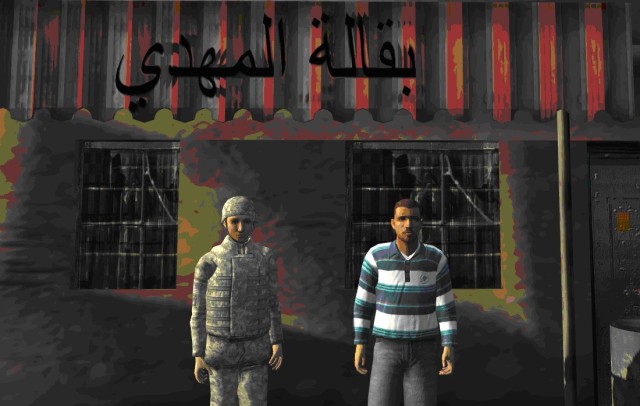The U.S. Army's Program Executive Office for Simulation, Training and Instrumentation (PEO STRI) fielded the first tactical questioning trainer to Fort Huachuca, Ariz., June 9. The device offers military intelligence units sustainment training in strategic examination skills for situations where an interpreter is required.
"As far as we know, this technology is the first of its kind," said Linda Morris, the project director for the Army's Intelligence and Electronic Warfare Tactical Proficiency Trainer (IEWTPT). "Currently, Soldiers are not trained in using a translator before deployment."
The Human Intelligence Control Cell (HCC), an auxiliary component of the IEWTPT, allows Soldiers to converse with non-English speaking avatars through a third-party.
"The important aspect is not the difference of languages, but rather the relationship with the translator and the foreign-speaking subject," said Robert Gomez, PEO STRI's lead engineer for the HCC.
The technology permits the Soldier to collect human intelligence through free-flowing conversation from a life-size virtual human projected on a portable screen.
For example, one avatar assumes the role as an Iraqi civilian who warily provides information on a weapons cache. The other avatar stands alongside the simulated Iraqi and translates the information from Arabic into English. At that point, the Soldier and the avatars engage in conversation in which the Soldier is instructed to gather the desired information through tactical questioning.
The Soldier's performance is monitored and recorded and he or she undergoes an after-action review to determine if the correct questions were posed to gather all the possible intelligence.
"That way, the commander can determine how well prepared the Soldiers are to gather intelligence and to ensure that each Soldier within the unit gets trained," Morris said.
Currently, military intelligence personnel are the targeted trainees, however there are plans to expand the instruction to additional units at corps level and below. Additionally, the HCC operates in German, but a myriad of languages will be offered in the coming months with the implementation of added databases.
Gomez notes other projected advancements to the HCC, "As the system matures, we will include interrogation exercises, cultural awareness training and local populace interactions."
"Eventually, we will require technologies that put the avatar in different moods that will affect his answers. Understanding and responding to certain body language will also become part of the training. All this technology is being developed," Gomez said.
The Army's Research, Development and Engineering Command's Simulation and Technology Training Center, General Dynamics C4 Systems, and the University of Southern California's Institute for Creative Technologies are working in collaboration with PEO STRI to execute the research, production and fielding of the IEWTPT's HCC throughout the Army.
The HCC will be fielded to Fort Lewis, Wash., Fort Hood, Texas, Fort Bragg, N.C., and Schofield Barracks, Hawaii, over the next few months.
"Our mission is to train the human component of the Soldier," Morris said. "In executing our mission, we determined that the best way to do that was for the Soldier to interact with the virtual world."


Social Sharing